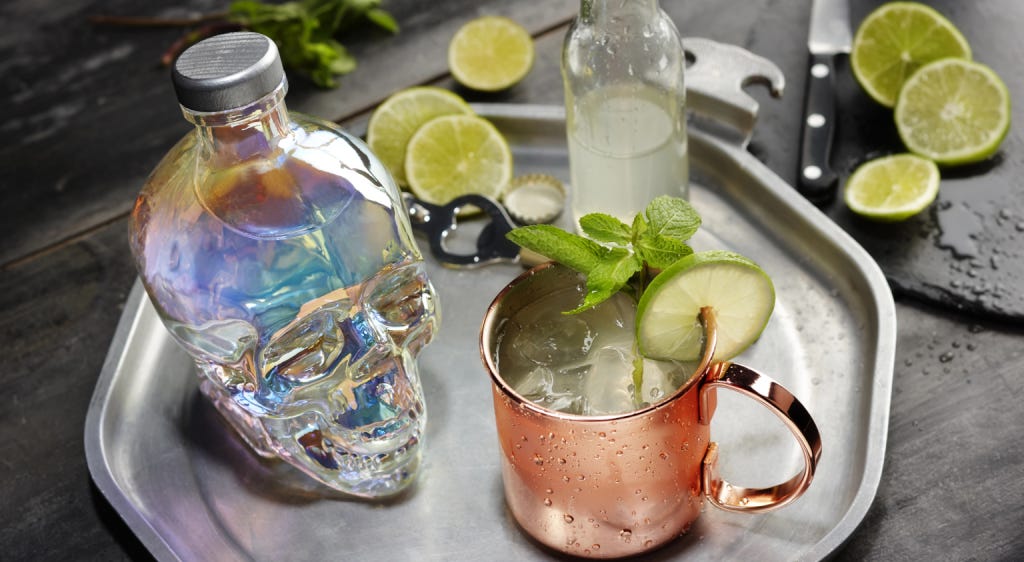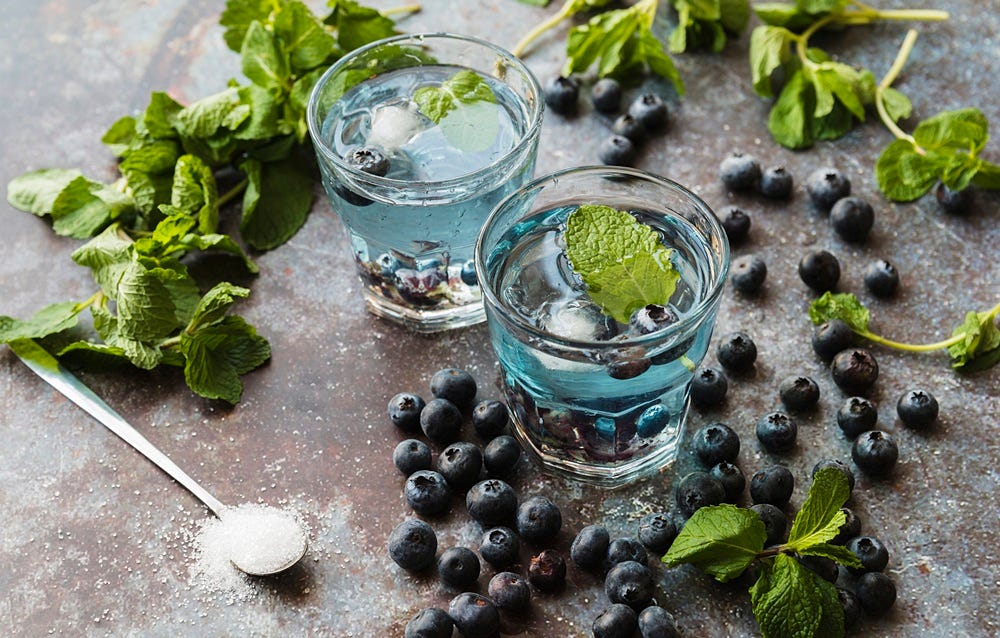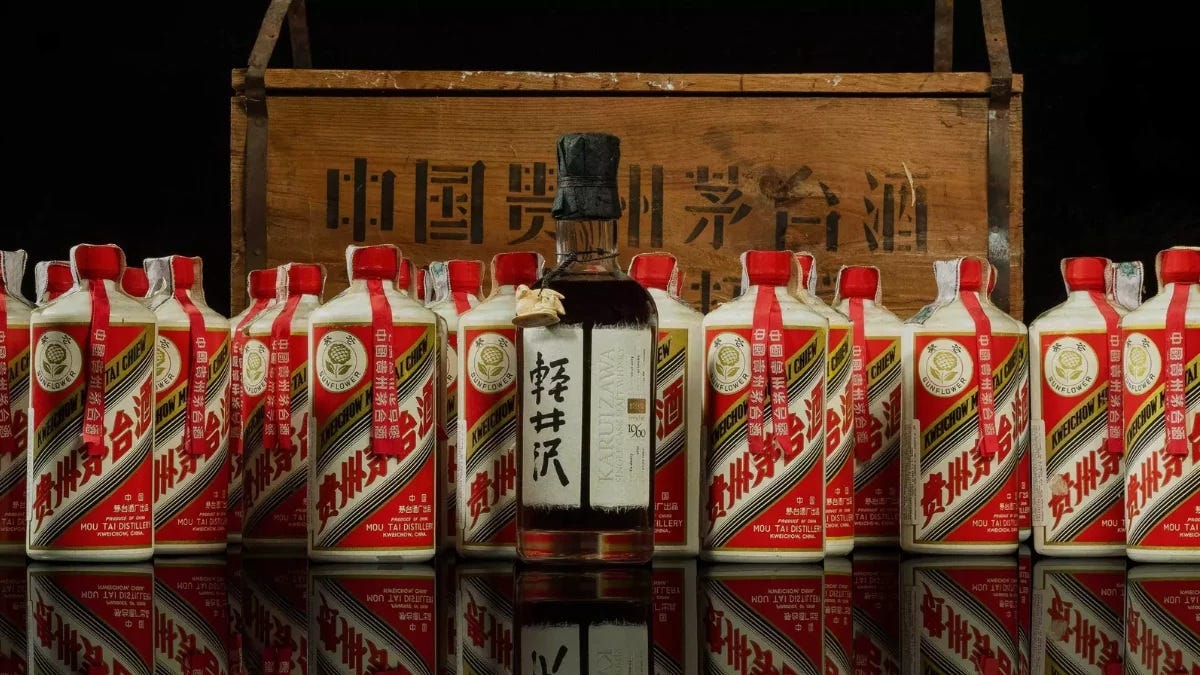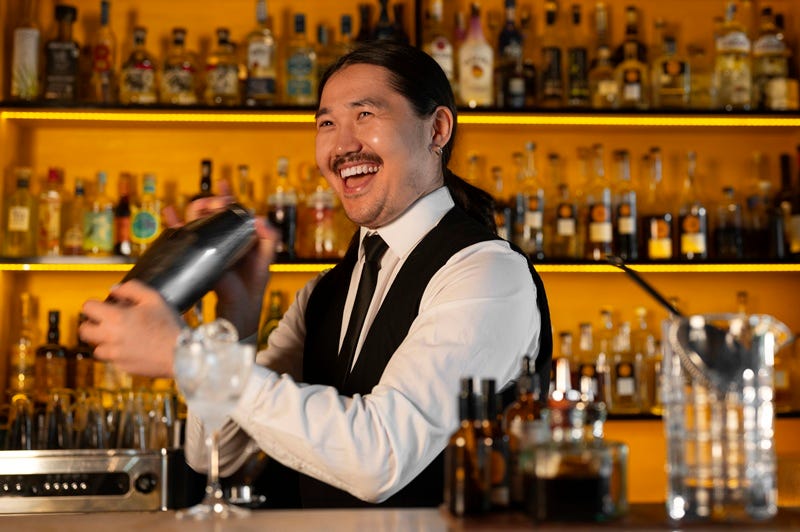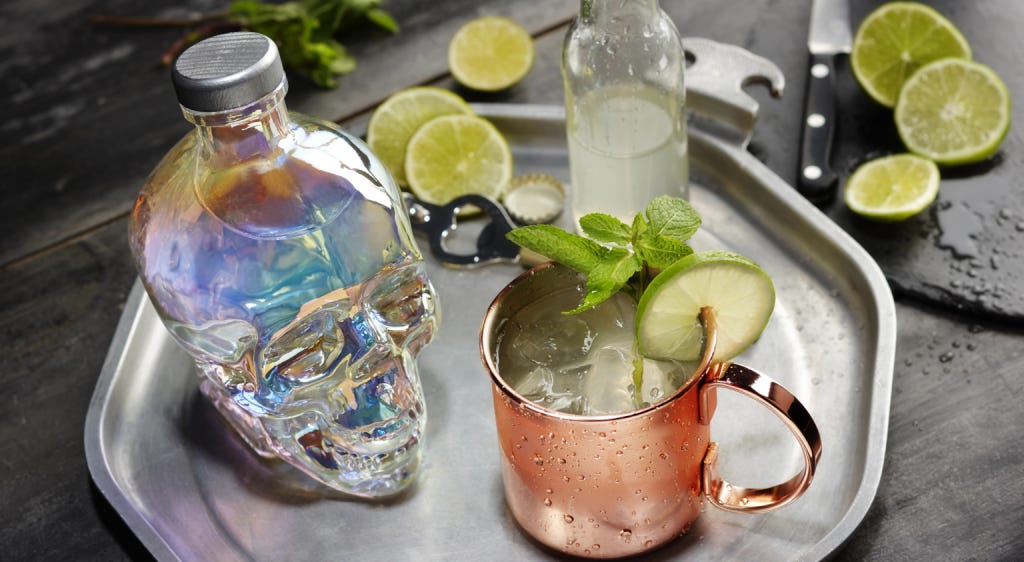
by lspeed | Oct 19, 2025 | LIQUORS: LIFT YOUR SPIRITS
Vodka is about clarity of spirit and neutrality of taste, but that hasn’t stopped brands from going overboard when it comes to branding and packaging. In a fiercely competitive market, distilleries push the limits of design and backstory. From sci-fi inspirations to luxury objets d’art, here are 10 of the more unusual vodkas you can buy and drink – or just collect and brag about:
1. Good Vodka (Green Alien Head Bottle)
Country: USA
What Makes It Unusual: This neon-green alien-shaped bottle screams Area 51. The extraterrestrial design makes no attempt at subtlety, and that’s the point — it taps into pop culture and conspiracy theory aesthetics for full novelty value. The vodka itself is usually neutral grain-based, but let’s be honest — the draw here is entirely visual. It’s fun, weird, and unapologetically gimmicky.
Market Niche: Perfect for Halloween parties, UFO conventions, or as a “conversation piece” on a back bar.
2. Crystal Head Aurora Vodka (Iridescent Skull Bottle)
Country: Canada
What Makes It Unusual: Dan Aykroyd’s Crystal Head Vodka gets a facelift with the Aurora edition, featuring an iridescent finish inspired by the Northern Lights. Made from English wheat and distilled five times, it’s filtered through Herkimer diamonds — a detail as mystical as the skull bottle suggests.
Luxury Meets Spirituality: The bottle’s shimmering sheen and skull shape tap into both spiritual and high-design aesthetics, blurring the line between spirit and sculpture.
3. NEFT Vodka (Mini Oil Barrel)
Country: Austria (Russian founders)
What Makes It Unusual: A premium vodka in a petroleum-style black oil drum? NEFT’s industrial-chic packaging flips luxury expectations. It’s designed to be rugged, unbreakable, and keeps the vodka cold for longer.
Storyline: NEFT, meaning “oil” in Russian, is a nod to its Siberian roots and the founders’ oil industry backgrounds. Inside is an award-winning vodka made from Austrian spring water and non-GMO rye.
4. Firestarter Vodka (Red Fire Extinguisher)
Country: Moldova
What Makes It Unusual: One of the most tongue-in-cheek designs in vodka, Firestarter comes in a red bottle shaped exactly like a fire extinguisher, nozzle and all. It’s a hit at bars and events purely for the visual gag.
Functionality: The twist-off valve doubles as a pour spout. Beyond the novelty, the vodka is quintuple-distilled from winter wheat.
5. Ocean Organic Vodka (Blue Orb Bottle)
Country: Hawaii, USA
What Makes It Unusual: This spherical bottle tilts like the Earth on its axis — and that’s no accident. Ocean Vodka’s packaging is a visual metaphor for sustainability and global responsibility. The spirit inside is made from organic sugarcane and deep ocean mineral water from 3,000 feet below the surface.
Environmental Ethos: It’s not just about aesthetics — this is a vodka designed to embody environmental values from distillation to design.
6. Kors Vodka (Sculpted Decanter with Gold Accents)
Country: Unknown (Marketed as Ultra-Luxury)
What Makes It Unusual: This is a vodka that competes with ultra-premium cognacs and perfumes. Its crystal-cut decanter, gold ornamentation, and velvet-lined packaging position it in the four-digit pricing tier.
Wild Claim: Kors boasts it uses a recipe once favored by Russian tsars and is distilled with water sourced from Arctic ice. Whether that’s marketing fiction or not, the brand banks on the “most expensive vodka” niche.
7. Absolut Elyx (Copper-Themed Bottle)
Country: Sweden
What Makes It Unusual: This copper-streaked bottle of Elyx stands apart visually, but its real twist is in the production: it’s distilled in a vintage 1921 copper still, giving the spirit its signature silky texture. Elyx has also leaned heavily into fashion, design, and influencer culture, offering copper pineapples, mugs, and swan-shaped vessels.
Elegance with Edge: Not the weirdest design on this list, but certainly one of the most design-forward luxury vodka rebrands.
8. Holland Vodka (Tall, Glass Bubble Base)
Country: Netherlands
What Makes It Unusual: This ultra-tall, sleek bottle with a glass orb base combines minimalism with kinetic curiosity — the round bottom lets the bottle rock slightly without tipping over.
Dutch Precision: It’s made from wheat and spring water using a five-step distillation process. The look is more chemistry lab than traditional liquor store.
9. Tsarskaya Gold (Fabergé Egg Service Set)
Country: Russia
What Makes It Unusual: Possibly the most decadent vodka service ever imagined, this isn’t just a bottle — it’s an entire Fabergé-style egg that opens up to reveal a set of mini bottles and glasses. The bottle design itself evokes the height of Russian imperial luxury.
Collector’s Item: This is not a casual drinker’s vodka — it’s museum-level kitsch and Old World pomp at its peak.
10. Stolichnaya Elit “Frozen” Edition (Frosted Silhouette)
Country: Latvia (Russian heritage)
What Makes It Unusual: Stoli Elit is already a premium line, but the sleek, elongated “Frozen” bottle edition evokes the icy purity the brand boasts about. With an almost aerodynamic design and matte-black or frosted finish (depending on the edition), it’s a stylistic declaration.
Cold Filtration: The vodka is filtered at sub-zero temperatures, adding credence to the chilly aesthetic.
Image Credit: https://www.crystalheadvodka.com/crystal-head/aurora/
_ _ _
© CHURRASCO PHUKET STEAKHOUSE / ALL RIGHTS RESERVED
Reprinting, reposting & sharing allowed, in exchange for a backlink and credits
Churrasco Phuket Steakhouse serves affordable Wagyu and Black Angus steaks and burgers. We are open daily from 12noon to 11pm at Jungceylon Shopping Center in Patong / Phuket.
We are family-friendly and offer free parking and Wi-Fi for guests. See our menus, reserve your table, find our location, and check all guest reviews here:
https://ChurrascoPhuket.com/
#Churrascophuket #jungceylon #phuketsteakhouse #affordablewagyu #wagyu
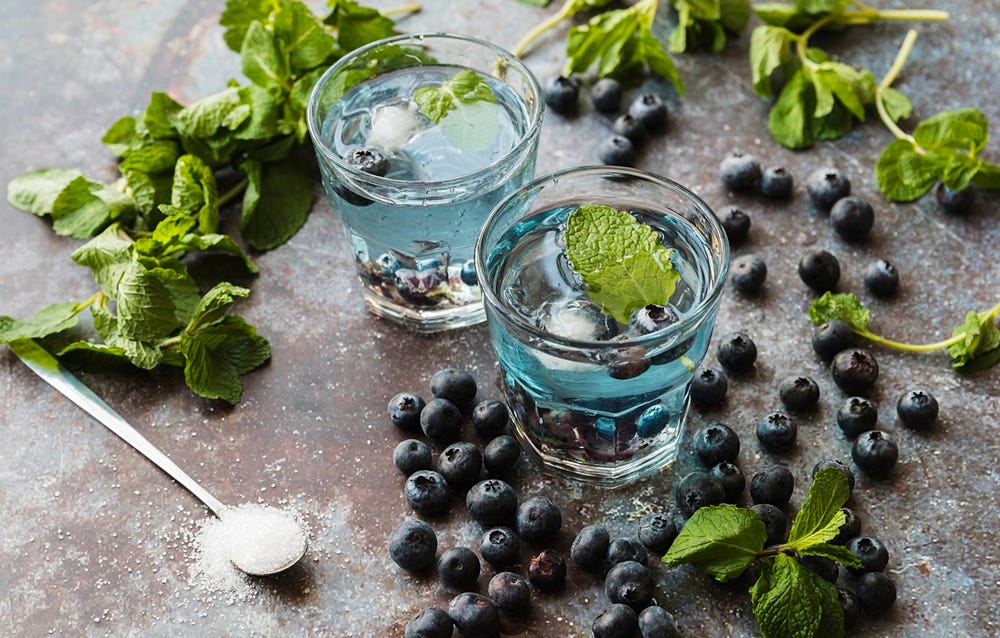
by lspeed | Oct 5, 2025 | LIQUORS: LIFT YOUR SPIRITS
Move over Sake and Soju. Asia’s newest obsession is juniper-based, botanically bold, and unapologetically local. Craft gin, once a niche import enjoyed only by expats or cocktail connoisseurs, is becoming one of the darlings of Asia’s distilling scene. From Tokyo to Mumbai, a new cohort of small-batch producers is taking on the spirit world, infusing traditional gin with regional flavors and cultural identity.
Unexpected Botanicals
Gin has always offered distillers a wide canvas for creativity. But in Asia, that creativity has evolved into a powerful form of cultural expression. Native ingredients once relegated to kitchens or apothecaries, such as Yuzu in Japan, Turmeric in India, Sampaguita in the Philippines, or Pomelo in Vietnam, are now signatures of premium gins that “taste like home”. “Gin allows us to tell a story,” says Jay Dhawan, co-founder of Stranger & Sons in Goa. “It’s not just about alcohol—it’s about identity.” Distillers are no longer content to replicate London Dry traditions. Instead, they’re developing spirits that resonate with their landscapes and communities.
Five Countries, Five Flavors
Japan: Precision Meets Poetry
Japan’s Kyoto Distillery, with its flagship KI NO BI, is credited with sparking some of Asia’s gin renaissance. Blended with Yuzu, Gyokuro tea, and Sansho pepper, KI NO BI offers a profile as delicate and structured as a haiku. Distilled with a rice spirit base and packaged with minimalist design, it has earned international accolades, including recognition as IWSC’s Gin Producer of the Year.
India: Spicy and Unapologetic
Indian distillers approach gin with the same intensity as their cuisine. Hapusa Gin highlights Himalayan juniper and turmeric for earthy complexity, while Nao Spirits’ Stranger & Sons layers Gondhoraj lime, pepper, and Indian citrus. The result is gins that are unapologetically bold, designed to match the energy and vibrancy of the subcontinent.
Vietnam: Terroir in a Bottle
Vietnam’s Song Cai Distillery leans into terroir-driven philosophy, sourcing botanicals directly from ethnic minority farmers. Pomelo, cassia, and ylang-ylang infuse their gins with flavors that mirror the country’s extraordinary biodiversity. By spotlighting smallholder agriculture, Song Cai has also positioned itself as a socially conscious distiller with a loyal international following.
Thailand: Tropical Alchemy
Bangkok’s Iron Balls Gin embraces pineapple and coconut for a playful tropical twist, while brands like Siam Lanna and Kata Rocks Gin highlight lemongrass, cardamom, and Thai herbs. Thailand’s craft gins are often designed with pairing in mind, working seamlessly with the bright, aromatic flavors of Southeast Asian cuisine.
Philippines: Floral Expressions
In the Philippines, Full Circle Distillers has infused their ARC Gin with Sampaguita (the national flower), calamansi, and mango, ARC captures a sense of place while also appealing to global palates. Multiple awards have cemented its reputation, and its presence in bars from Manila to Manhattan shows how quickly Filipino gin is gaining traction.
What’s Next?
Asian craft gins are no longer confined to local bars. They’re winning medals at the International Wine & Spirit Competition, appearing on cocktail menus in London and New York, and attracting attention from mixologists eager for new flavor profiles. Expect further experimentation, such as shiitake-infused gins in Japan, Ayurvedic-inspired botanicals in India, and zero-waste distilling initiatives across the region. Tokyo’s Ethical Spirits, for instance, is turning sake lees and expired beer into sustainable gin, while Vietnamese distillers continue to explore indigenous plants overlooked by mainstream markets. And bartenders in Hong Kong and Singapore are partnering with local distillers to create limited editions designed exclusively for their cities’ cocktail scenes.
Image Credit: https://freepik.com
_ _ _
© CHURRASCO PHUKET STEAKHOUSE / ALL RIGHTS RESERVED
Reprinting, reposting & sharing allowed, in exchange for a backlink and credits
Churrasco Phuket Steakhouse serves affordable Wagyu and Black Angus steaks and burgers. We are open daily from 12noon to 11pm at Jungceylon Shopping Center in Patong / Phuket.
We are family-friendly and offer free parking and Wi-Fi for guests. See our menus, reserve your table, find our location, and check all guest reviews here:
https://ChurrascoPhuket.com/
#Churrascophuket #jungceylon #phuketsteakhouse #affordablewagyu #wagyu
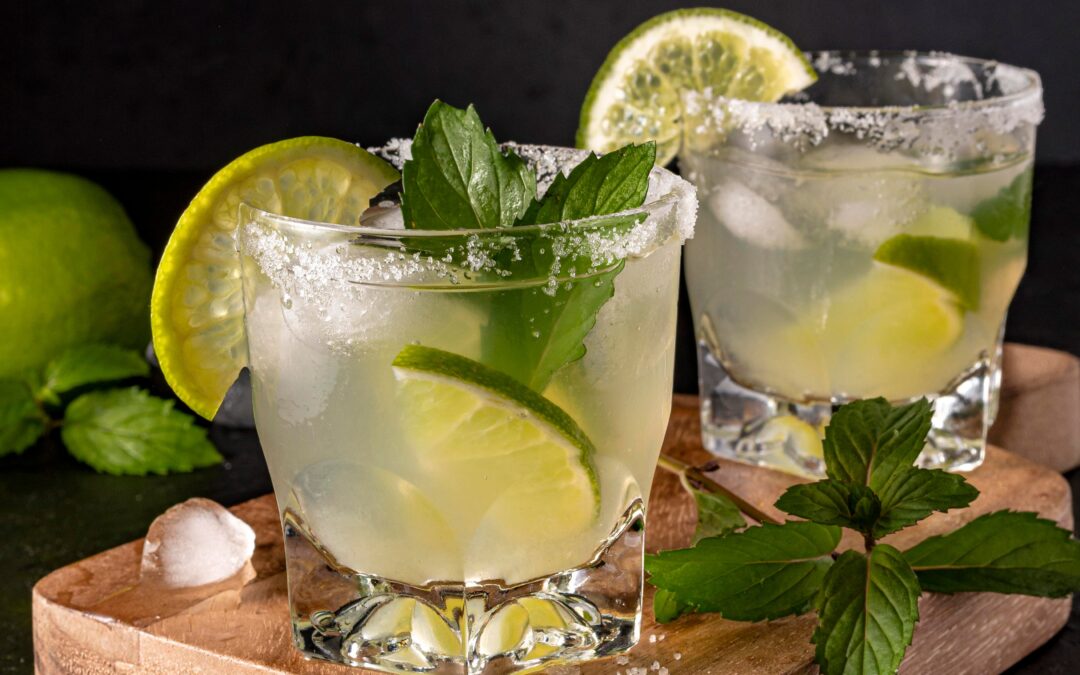
by lspeed | Sep 21, 2025 | LIQUORS: LIFT YOUR SPIRITS
Cachaça is Brazil in a bottle. For centuries, this spirit has been the backbone of rural life, the lubricant of festivals, and the foundation of the world-famous Caipirinha. Behind its easygoing image lies a carefully regulated product, shaped by centuries of improvisation and, more recently, by law and scientific precision. Unlike rum, which it often gets compared to, Cachaça is distilled not from molasses but from fresh-pressed sugarcane juice. Its identity is protected by Brazilian law with the same seriousness that France applies to Cognac or Mexico to Tequila.
Legalities
Cachaça started out living in the shadows of Brazil’s economic policies. In colonial days it was banned, then taxed, then embraced as a source of revenue. Fast forward to the 21st century, and the Brazilian government has codified its definition with exacting detail. By law, Cachaça must be produced in Brazil, distilled from fresh sugarcane juice, and bottled at between 38% and 48% alcohol by volume. Anything else is not Cachaça. It may sound bureaucratic, but this legal clarity was essential in protecting the drink internationally.
In trade agreements with the United States and the European Union, “Cachaça” is now recognized as a distinctive product of Brazil, no small feat in a world where “rum” could easily overshadow it whole. The regulations extend further than just sugarcane and proof. Distillers must follow precise fermentation and distillation methods, and labeling laws prevent deceptive practices. Industrial producers, who churn out millions of liters, are subject to the same identity rules as the micro-producers in Minas Gerais who still fire their copper pot stills by hand. The playing field is wide, but the definition is clear.
Fermentation
The process begins not in the still but in the field. Cane must be cut, pressed, and fermented quickly before wild bacteria spoil the juice. Fermentation is fast, often less than 24 hours, spontaneous, and guided by native yeasts. In modern distilleries, selected yeasts are increasingly used to control consistency, but artisanal makers still trust their wood vats and the invisible life of the terroir. The result is a mash low in alcohol but rich in volatile compounds that will survive distillation and give Cachaça its green, vegetal, sometimes funky edge.
Distillation
Distillation in Brazil divides the spirit into two main categories: industrial Cachaça, usually produced in continuous column stills, and artisanal Cachaça, distilled in copper pot stills. Industrial column stills deliver volume and predictability, yielding spirits that are lighter, cleaner, and cheaper. Pot stills allow for more congeners, the flavorful but difficult compounds. For aficionados, that “imperfection” is what makes artisanal Cachaça compelling. Copper plays a crucial role here, not only conducting heat evenly but also reacting with sulfur compounds, smoothing out harsh edges.
Distillers discard the first and last fractions, called the head and tail. keeping only the heart, a delicate balance that determines whether the spirit sings or stumbles. Precision is optional, as Brazilian law even regulates the allowable levels of contaminants like methanol and copper. This ensures that small-batch producers working with rustic equipment must still meet standards that protect the reputation of the category.
The Role of Wood
Unlike most white rums, a significant portion of Cachaça production goes into wood. But Brazil does not limit itself to oak. Over 20 native woods, Amburana, Bálsamo, Jequitibá, Ipê, are legally permitted. Each imparts its own fingerprint, such as Amburana with its spicy cinnamon-vanilla notes, Bálsamo with earthy bitterness, and Jequitibá adding subtle floral tones. These woods are part of Cachaça’s uniqueness, a sensory link between the spirit and the Brazilian forests. Oak-aged versions exist for export markets, but within Brazil, drinkers often prefer the flavors of their own native trees.
Law and Life
Cachaça is not only a triumph of regulation and control. Its cultural reality is messier, more improvisational. In roadside bars you can still find rough, fiery versions served in chipped glasses, while in São Paulo’s sleek cocktail lounges, bartenders measure out barrel-aged expressions with reverence. Yet the fact that both experiences fall under the same legal definition is a testament to the flexibility and precision of Brazil’s regulatory framework. The law protects Cachaça not from variety but from ambiguity.
Image Credit: https://freepik.com
_ _ _
© CHURRASCO PHUKET STEAKHOUSE / ALL RIGHTS RESERVED
Reprinting, reposting & sharing allowed, in exchange for a backlink and credits
Churrasco Phuket Steakhouse serves affordable Wagyu and Black Angus steaks and burgers. We are open daily from 12noon to 11pm at Jungceylon Shopping Center in Patong / Phuket.
We are family-friendly and offer free parking and Wi-Fi for guests. See our menus, reserve your table, find our location, and check all guest reviews here:
https://ChurrascoPhuket.com/
#Churrascophuket #jungceylon #phuketsteakhouse #affordablewagyu #wagyu
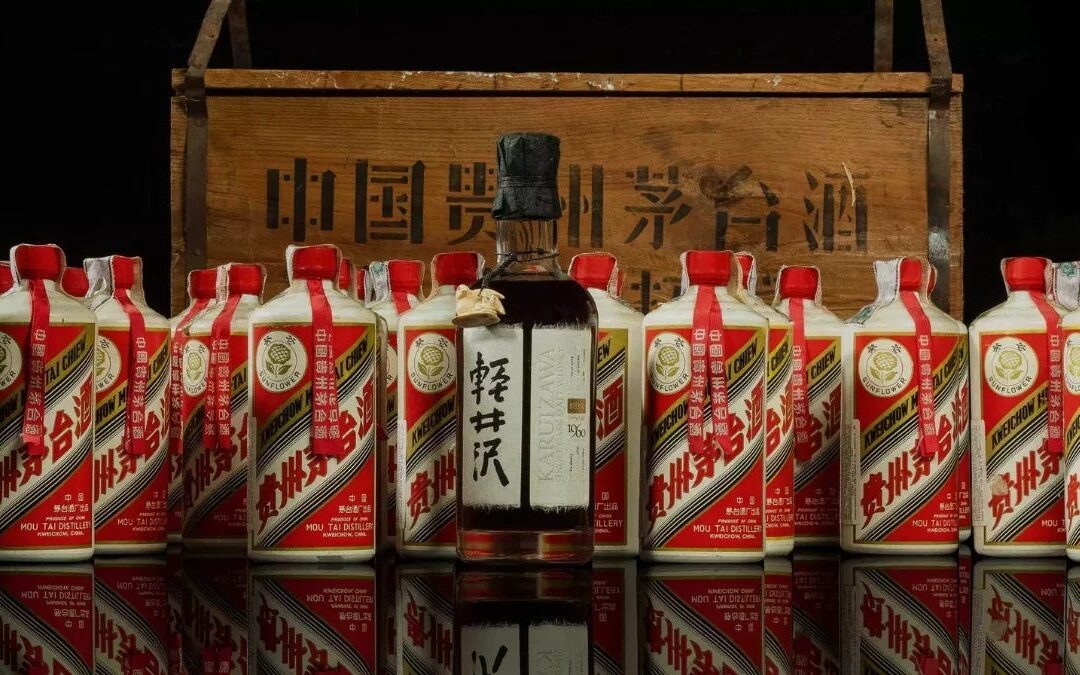
by lspeed | Sep 7, 2025 | LIQUORS: LIFT YOUR SPIRITS
Moutai is not just China’s most iconic liquor, it is a cultural artifact. Its production methods are rooted in tradition, its flavor shaped by geography and time, and its consumption tightly woven into social fabric and political symbolism.
For outsiders, Moutai can be mystifying at first sip. Pungent, bold, and utterly unlike Western spirits. But for those who embrace it, Moutai offers one of the more storied drinking experiences in the world. Whether as a diplomatic tool, a luxury collectible, or a traditional drink passed around a family table, Moutai is an enduring emblem of Chinese cultural identity.
Born in Guizhou, Raised by Dynasties
Moutai’s roots that stretch back over two thousand years. It is produced in the town of Maotai, located in Renhuai City, Guizhou Province, a remote and mountainous region in southwest China. The spirit rose to national prominence during the Qing Dynasty, but its modern incarnation began in 1951 when the state established the Kweichow Moutai Distillery by merging several private producers.
Moutai became a symbol of national pride after it was served during diplomatic banquets, famously toasted by Premier Zhou Enlai during President Nixon’s landmark visit to China in 1972. It has since gained a reputation as China’s “national liquor,” often associated with political functions, state gifts, and elite gatherings.
Composition and Ingredients
Moutai is a type of sauce-aroma baijiu (酱香型白酒), one of the mret complex aroma profiles in the baijiu world. Its primary ingredients are surprisingly simple:
However, what sets Moutai apart is not its raw materials, but its production process, a meticulous, time-intensive cycle involving:
The unique microflora of the Chishui River basin and Guizhou’s warm, humid climate play a vital role in fermentation, much like terroir in wine production. The wheat is used to create a naturally occurring fermentation starter called “qu” (曲), rich in wild yeasts and enzymes. This gives Moutai its trademark umami-driven aroma, often likened to soy sauce, roasted nuts, tropical fruit, and fermented beans—an intense, almost savory profile that takes many by surprise.
Ritual and Reverence
In China, Moutai is more than a beverage, it is a ritual. Its high alcohol content (typically 53% ABV) and powerful aroma mean Moutai is an acquired taste, but once acquired, it’s revered. Served at room temperature in small porcelain cups, it is sipped slowly and ceremonially. Toasting customs are deeply embedded in Chinese culture, and Moutai is frequently consumed at business banquets, weddings, and state functions. Some typical practices:
-
Ganbei (干杯): A full-toast where the entire cup must be downed at once, showing respect and sincerity.
-
Pairing: It is rarely mixed and is usually consumed with food, especially rich, spicy, or umami-heavy dishes.
-
Gift Culture: Bottles of Moutai, especially limited-edition or vintage ones, are commonly given as luxury gifts or bribes, making them both culturally significant and politically sensitive.
From Curiosity to Prestige
Outside China, Moutai is both exotic and enigmatic. Its role in diplomatic gifting continues to raise its profile, and it is now slowly becoming a statement bottle in some global fine spirits circles. In recent years, it has made inroads into global markets, targeting luxury spirits consumers. Kweichow Moutai, the brand’s main producer, is now one of the world’s most valuable liquor companies by market capitalization, surpassing even Diageo at certain points.
However, international acceptance has been mixed:
-
Positive reception in Asia and among Chinese diaspora communities, where cultural familiarity enhances appreciation.
-
Western connoisseurs often struggle with its intense flavor and unorthodox aroma, although some spirits critics have praised its complexity.
-
Moutai has featured in luxury auctions, high-end duty-free shops, and even starred in crossovers like Moutai-flavored chocolates and cocktails at elite bars.
-
Despite limited mass appeal, collectors and investors have embraced it, turning vintage Moutai bottles into speculative assets.
Image Credit: https://www.blueoceanmy.com/wp-content/uploads/2023/12/Exploring-the-Unique-World-of-Maotai-Chinas-Premier-Spirit.png.webp
_ _ _
© CHURRASCO PHUKET STEAKHOUSE / ALL RIGHTS RESERVED
Reprinting, reposting & sharing allowed, in exchange for a backlink and credits
Churrasco Phuket Steakhouse serves affordable Wagyu and Black Angus steaks and burgers. We are open daily from 12noon to 11pm at Jungceylon Shopping Center in Patong / Phuket.
We are family-friendly and offer free parking and Wi-Fi for guests. See our menus, reserve your table, find our location, and check all guest reviews here:
https://ChurrascoPhuket.com/
#Churrascophuket #jungceylon #phuketsteakhouse #affordablewagyu #wagyu
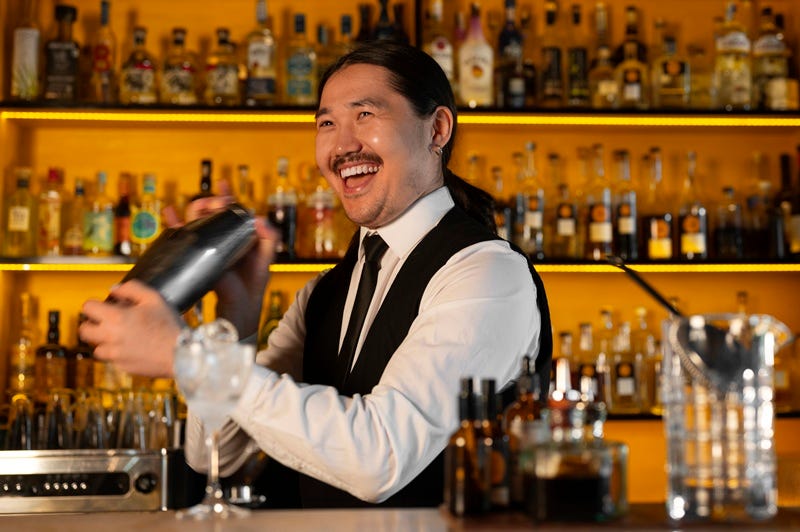
by lspeed | Aug 24, 2025 | LIQUORS: LIFT YOUR SPIRITS
Changing social habits, a focus on health, and the rise of the “Sober Curious” movement have turned zero-alcohol spirits into an evolving bar drinks category. These products are not to be confused with Mocktails, because they mimic the aroma, flavor complexity, and ritual of spirits, but without the intoxication.
They’re not soft drinks in disguise, instead crafted with the same botanical distillation, barrel aging, or infusion processes as their alcoholic counterparts. Bartenders are starting to use using them to craft cocktails, along those using traditional pours.
1. Almave Blanco Nonalcoholic Blue Agave Spirit
Created in partnership with Formula 1 driver Lewis Hamilton, Almave Blanco is produced in Mexico from Blue Weber agave. The production method adapts tequila-making processes, without fermentation, to preserve the raw plant’s earthy and peppery profile. It has a clean, slightly vegetal aroma with hints of citrus and light herbal notes. While not tequila, its flavor structure makes it compatible with classic agave-based cocktails such as margaritas or Palomas. It can also be served neat over ice with a lime wedge for a simple presentation.
2. Ritual Zero-Proof Rum
Ritual Zero-Proof Rum is designed as a substitute for light rum in mixed drinks. Its formulation uses natural flavors and botanicals to evoke caramel, mild molasses, baking spice, and tropical fruit notes. The texture is light, with a finish that complements citrus and mint. It functions well in standard rum cocktails such as mojitos, daiquiris, or rum punches, and can also be incorporated into non-alcoholic culinary recipes that traditionally use rum, such as sauces or baked desserts.
3. Monday Zero Alcohol Gin
Monday Gin follows the profile of a London Dry gin, with juniper as the dominant element supported by bitter orange peel, coriander seed, and other botanicals. It is unsweetened and contains no carbohydrates, giving it a lean mouthfeel. The aroma is dry and citrus-forward, and the finish has a peppery, resinous edge. It is suited to gin-based cocktails such as gin and tonic, martini, or Negroni variations, and its structure allows it to blend with a range of mixers without being overpowered.
4. Spiritless Kentucky 74 Non-Alcoholic Whiskey
Spiritless Kentucky 74 begins as a conventional bourbon-style whiskey before undergoing reverse distillation to remove ethanol. The process retains elements from oak aging, resulting in flavors of light caramel, vanilla, and toasted wood, with a soft heat on the palate. The body is lighter than standard bourbon but retains enough tannin structure for use in mixed drinks. It is commonly used in Old Fashioneds, whiskey sours, or highball-style serves, and can also be consumed neat for a milder sipping option.
5. Cut Above Zero Proof Mezcal
Cut Above produces one of the few non-alcoholic mezcals currently available. It replicates mezcal’s profile with smoke-forward aromas, roasted agave-like vegetal notes, and a trace of salinity. The flavor is earthy and slightly savory, with green pepper and citrus in the background. It is functional in mezcal-based cocktails such as mezcalitas or smoky margaritas, and can add depth to mixed drinks that benefit from a smoky component. It may also be served over ice with a slice of orange and a pinch of chili salt.
6. Dr. Zero Zero AmarNo Non-Alcoholic Amaro Spirit
AmarNo draws from the Italian amaro tradition, combining botanicals such as gentian, wormwood, and orange peel. The profile is layered, starting with mild sweetness, followed by herbal bitterness and spice on the finish. It is typically consumed as an aperitif with soda or tonic, or as a bitter component in non-alcoholic versions of cocktails like the Negroni. The flavor concentration allows it to be served neat or over ice as a digestif-style option.
7. Lyre’s Coffee Originale Nonalcoholic Apéritif
Lyre’s Coffee Originale is a coffee-based non-alcoholic liqueur alternative. The flavor combines roasted coffee bean, cocoa, and caramel, with a balance between bitterness and residual sweetness. Its intended use is in coffee-based cocktails, most notably the espresso martini, but it can also be added to hot or iced coffee. In culinary contexts, it can be incorporated into desserts such as tiramisu or used as a topping for ice cream, replicating the role of coffee liqueurs in recipes without adding alcohol.
8. Almave Blanco
Almave’s production approach focuses on preserving the flavor integrity of Blue Weber agave without fermentation or distillation into alcohol. This results in a spirit with a dry, herbal character, mild sweetness, and a clean finish. It is suitable for use in cocktails that traditionally call for tequila, or as a neat serve for those wanting an agave-forward drink without intoxication. Its proximity in taste to traditional agave spirits has made it one of the more notable recent entries in the non-alcoholic category.
These examples illustrate the range of styles now available in the non-alcoholic spirits market. None exactly replicate their alcoholic counterparts, but are formulated to deliver familiar flavor cues and cocktail versatility. For bartenders, they provide an expanded toolset. For consumers, they offer greater choice in how and what to drink, without the effects of alcohol. Worth a try, we think.
Image Credit: https://freepik.com
_ _ _
© CHURRASCO PHUKET STEAKHOUSE / ALL RIGHTS RESERVED
Reprinting, reposting & sharing allowed, in exchange for a backlink and credits
Churrasco Phuket Steakhouse serves affordable Wagyu and Black Angus steaks and burgers. We are open daily from 12noon to 11pm at Jungceylon Shopping Center in Patong / Phuket.
We are family-friendly and offer free parking and Wi-Fi for guests. See our menus, reserve your table, find our location, and check all guest reviews here:
https://ChurrascoPhuket.com/
#Churrascophuket #jungceylon #phuketsteakhouse #affordablewagyu #wagyu
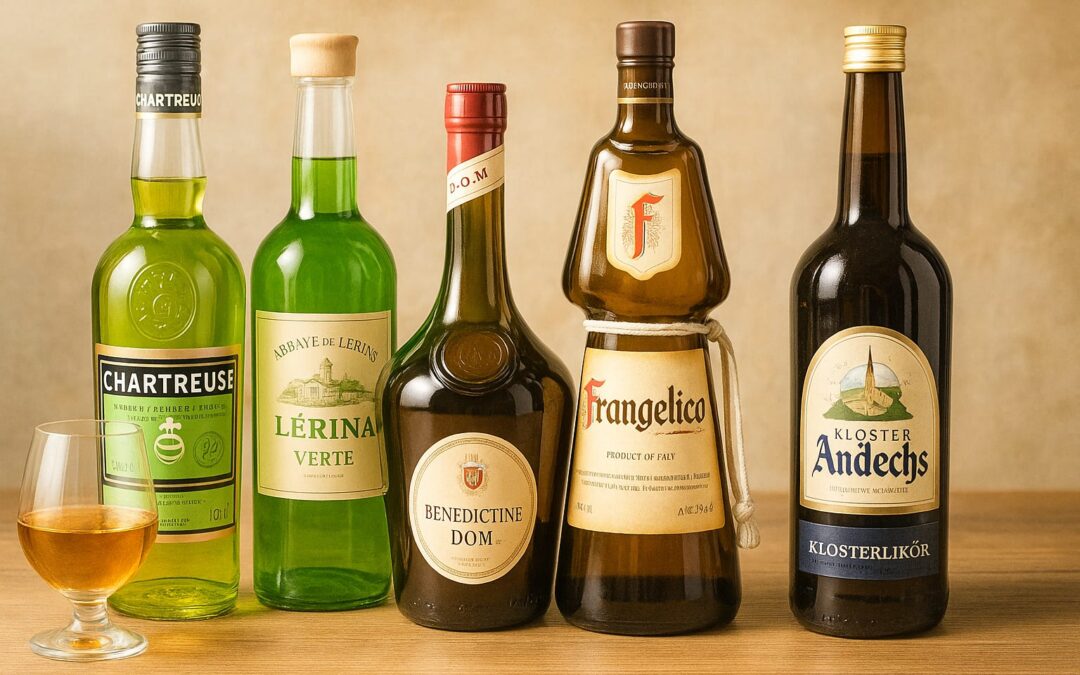
by lspeed | Aug 10, 2025 | LIQUORS: LIFT YOUR SPIRITS
For centuries, monastic communities have produced herbal liqueurs and spirits, originally as medicinal remedies rooted in cloistered knowledge of plants, fermentation, and distillation. These liqueurs often carry not only religious significance but also cultural and historical weight, representing some of the oldest continuously crafted beverages in the world. While most are associated with European Catholic orders, a few lesser-known examples and adaptations can be found in other regions as well. Here are some of the better known ones:
1. Chartreuse (France)
Order: Carthusian monks
Established: 1737 (recipe origin: 1605)
Location: Grande Chartreuse monastery, Isère, France
Chartreuse is the most authentic and prominent monastic liqueur still in production today. The Carthusian monks produce two main types: Green Chartreuse (55% ABV) and Yellow Chartreuse (40% ABV), both made from a secret blend of 130 herbs and plants. The formula originates from a 1605 manuscript given to the monks, which they adapted into a tonic known as Elixir Végétal de la Grande-Chartreuse in 1737.
Only two monks at any time know the complete recipe. The liqueur is distilled in Voiron and aged in oak barrels in the Chartreuse Mountains. Despite global demand, the monks announced in 2023 that they would not increase production, citing ecological concerns and a desire to maintain their monastic focus. Chartreuse is widely used in classic cocktails such as the Last Word and the Bijou, as well as sipped neat as a digestif.
2. Bénédictine (France)
Order: Originally Benedictine monks (modern version secular)
Established: Recipe attributed to 1510; commercial production since 1863
Location: Fécamp, Normandy, France
Bénédictine liqueur was inspired by a recipe said to have been developed by Benedictine monks at Fécamp Abbey in the early 16th century. Production ceased during the French Revolution. In 1863, wine merchant Alexandre Le Grand revived the formula and launched the liqueur under the label D.O.M. Bénédictine (“Deo Optimo Maximo”).
Today, Bénédictine is produced by Bacardi-Martini. Though no longer monastic in production, it retains branding and lore that emphasize its abbey origins. The liqueur contains 27 herbs and spices, with a profile that’s sweeter and more citrus-forward than Chartreuse. It is used in the B&B (Bénédictine and Brandy) and in culinary applications.
3. Kloster Andechs Liqueurs (Germany)
Order: Benedictine monks of Andechs Abbey
Established: Spirits since the 15th century (modern distillation ongoing)
Location: Andechs, Bavaria, Germany
Andechs Abbey is one of the few active Benedictine monasteries in Europe producing both beer and spirits. The monks craft small batches of traditional herbal liqueurs and fruit brandies, including Klosterlikör, a bitter herbal digestif. They also produce Obstler (fruit brandy from apples and pears), following traditional monastic distillation methods.
Products are mostly sold on-site or through regional retailers. Proceeds support the monastery’s upkeep and charitable works.
4. Abbaye de Lérins Liqueurs (France)
Order: Cistercian monks
Established: Distillation began in the 1990s
Location: Île Saint-Honorat, near Cannes, France
Located on a small island off the French Riviera, the Cistercian monks of Lérins Abbey produce limited quantities of liqueurs and fortified wines. Their products include Lérina Verte and Lérina Jaune, herbal spirits inspired by Chartreuse, as well as fruit-based liqueurs made with walnuts, mandarins, or verbena.
All products are made by the monastic community, with ingredients often grown on the island. Sales are direct to consumers or via the abbey’s website. Production remains intentionally small-scale.
5. Elixir Végétal (France)
Order: Carthusian monks
Established: 1737
Location: Same as Chartreuse
Separate from Chartreuse liqueur, the Elixir Végétal de la Grande-Chartreuse is the original 69% ABV herbal tonic developed by the Carthusians. It is sold in 100 ml bottles housed in small wooden cases and still used in traditional ways: diluted in sugar water or on a sugar cube as a tonic or digestive aid. Though medicinal in origin, it is legally classified as a spirit.
6. Orthodox Monasteries (Eastern Europe & Greece)
Orders: Various Orthodox Christian monastic communities
Products: Raki, tsipouro, fruit and herbal liqueurs
Monastic communities in countries like Greece, Serbia, Bulgaria, and Romania often produce their own tsipouro, raki, or homemade fruit liqueurs using grapes, cherries, plums, and herbs. Production is largely for local use or monastery shops, not for export or large-scale branding.
Mount Athos in Greece, for example, produces spirits from monastery-grown grapes, while Serbian monasteries often make walnut and cherry liqueurs for religious festivals. These are made with traditional techniques and are part of monastic self-sufficiency, though rarely marketed internationally.
7. Mount Saint Benedict (Trinidad and Tobago)
Order: Benedictine monks
Products: Bay rum and herbal preparations
Though not a liqueur in the modern sense, Mount Saint Benedict Abbey in Trinidad produces bay rum, a traditional Caribbean herbal tonic made with alcohol and essential oils. While used externally, it reflects the same monastic interest in herbal preparations. The abbey has also developed herbal bitters and teas with therapeutic intent.
8. Holy Transfiguration Monastery (Australia)
Order: Eastern Orthodox monks
Products: Cherry and walnut liqueurs (limited)
A small Orthodox monastery in Victoria, Australia, reportedly produces small batches of cherry and walnut liqueurs using traditional methods. These are typically available through monastery gift shops and are made from local fruit and herbs. Production is artisanal and supports the religious community.
9. North American Trappist Monasteries
Orders: Trappist (Cistercian)
Notable locations: New Clairvaux Abbey (California), St. Joseph Abbey (Louisiana)
Products: Primarily beer and wine; limited interest in spirits
While Trappist monasteries in North America focus more on beer and wine, some have expressed interest in distillation. For example, New Clairvaux Abbey in California partnered with Sierra Nevada Brewing Company to produce monastic-style beers. Liqueur production has been explored, but no sustained spirit distillation exists to date.
10. Buddhist and Asian Monastic Traditions
Regions: Japan, China
Products: Herbal infusions, sometimes preserved in alcohol
In Buddhist traditions, alcohol consumption is generally discouraged. However, historical records from Japanese and Chinese temples mention the use of herbal infusions preserved in alcohol for medicinal use. These were not consumed as recreational drinks but served a functional role similar to monastic elixirs in Europe.
Image Credit: https://churrascophuket.com
_ _ _
© CHURRASCO PHUKET STEAKHOUSE / ALL RIGHTS RESERVED
Reprinting, reposting & sharing allowed, in exchange for a backlink and credits
Churrasco Phuket Steakhouse serves affordable Wagyu and Black Angus steaks and burgers. We are open daily from 12noon to 11pm at Jungceylon Shopping Center in Patong / Phuket.
We are family-friendly and offer free parking and Wi-Fi for guests. See our menus, reserve your table, find our location, and check all guest reviews here:
https://ChurrascoPhuket.com/
#Churrascophuket #jungceylon #phuketsteakhouse #affordablewagyu #wagyu


